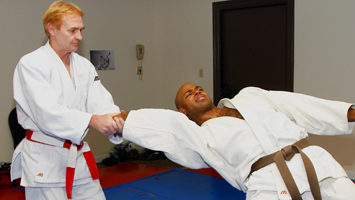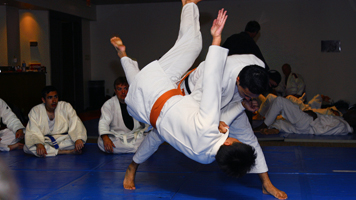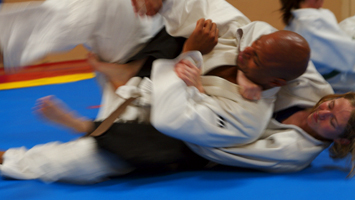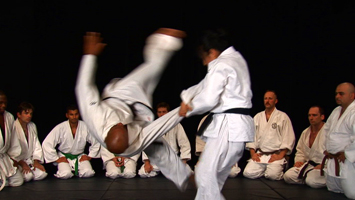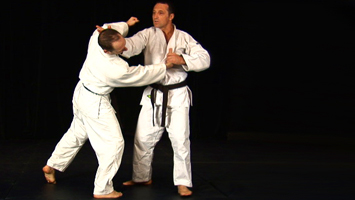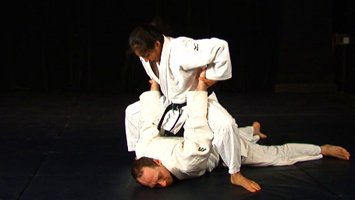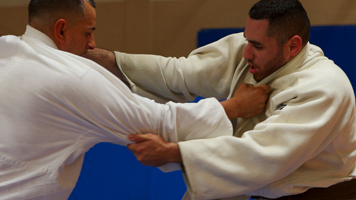 |
History of Danzan Ryu Jujitsu Danzan Ryu Jujitsu Danzan Ryu Jujitsu comes from traditional Japanese battlefield fighting arts. It was established by Master "Henry" Seishiro Okazaki in the early part of the 20th century. Danzan means "Sandalwood Mountain" in Japanese; Okazaki named the system after the Chinese kanji for Hawaii in honor of one of his martial arts instructors, Wo Chung. Master "Henry" Seishiro Okazaki Mater Okazaki was born in 1890 in Japan. As traditional Samurai social structures were breaking down during the advent of the Meji Era, Okazaki's family suffered financial loss, prompting Seishiro to travel abroad in search of opportunity. He arrived in Hawaii in 1906 at the age of 16. By then, Hawaii had become a popular and hopeful destination for Japanese. Okazaki was diagnosed with tuberculosis at 19, which in an age before antibiotics, was a grave message. He began to study Judo with all his might, and 2 years later he amazed everyone by recovering from his ailments. Convinced that Judo had been the source of his recovery, he dedicated himself to learning the martial arts and healing systems of the masters in Hawaii. He studied Judo, Jujitsu, Karate, Filipino knife fighting, Kung Fu, and the secret art of Hawaiian Lua, as well as Spanish Dirk throwing, western boxing and wrestling. After a stunning victory against Carl Morris, an American Heavyweight boxing champion in 1922, he was on his way to becoming an accomplished martial artist. In 1924 he took a brief but fruitful visit to Japan to study secret techniques from the old masters. He visited many Judo and Jujitsu schools, carrying a letter of introduction from his Sensei in Hawaii. At that time, he also visited the KoDoKan school of Judo founder Jigoro Kano, who awarded him the rank of Sandan (3rd degree black belt) in Judo. He established a dojo and massage facility in 1926 in Maui with his brother Genkitchi. Okazaki also studied traditional Japanese and European massage techniques, creating his own synthesis of restorative massage based on Seifukujutsu: adjustment and restoration. At the time he was probably better known for his healing practices than his fighting arts, though both were exceptional. In 1929, he moved to Oahu and established a massage business and dojo, The Seifukujutsu Inn or Nikko Restoration Sanitorium. His Dojo was called the KoDenKan, referring to a tradition where the older students teach the younger ones. He trained students of any origin and race including women and children, a break from the traditionally closed doors of Japanese martial arts. In fact, shortly after the Japanese attack on Pearl Harbor when many Japanese were interned, Okazaki trained American soldiers and contributed to the hand-to-hand fighting manual used by the Army. His fame as a physical therapist and massage practitioner grew; he even treated President Franklin D. Roosevelt who was on a visit to the islands. Okazaki became known internationally as a healer who would provide aid to what others saw as hopeless nerve and muscular disorders. He worked tirelessly morning and night, healing others and teaching Jujitsu. Okazaki died in 1951, leaving a legacy of martial and healing arts that has successfully spread throughout the United States. American Judo and Jujitsu Federation Around 1938-1940, four of Okazaki's top students left for California to begin their own schools and establish a national organization to propagate the system they had learned. It wasn't until after World War II that this was realized. In 1949 Ray Law, "Bud" Estes, John Cahill, and Dick Rickerts established the American Judo and Jujitsu Federation, or AJJF. It was incorporated in 1958 as a non-profit organization. It was Okazaki's dream to have Danzan Ryu Jujitsu practiced in all 50 states of the Union, an idea that is slowly being realized through continued teaching and spreading of the Danzan Ryu system. The AJJF inherited the entire system of Danzan Ryu Jujitsu as practiced by Master Okazaki. References: Compiled by Sandy Chase
|
